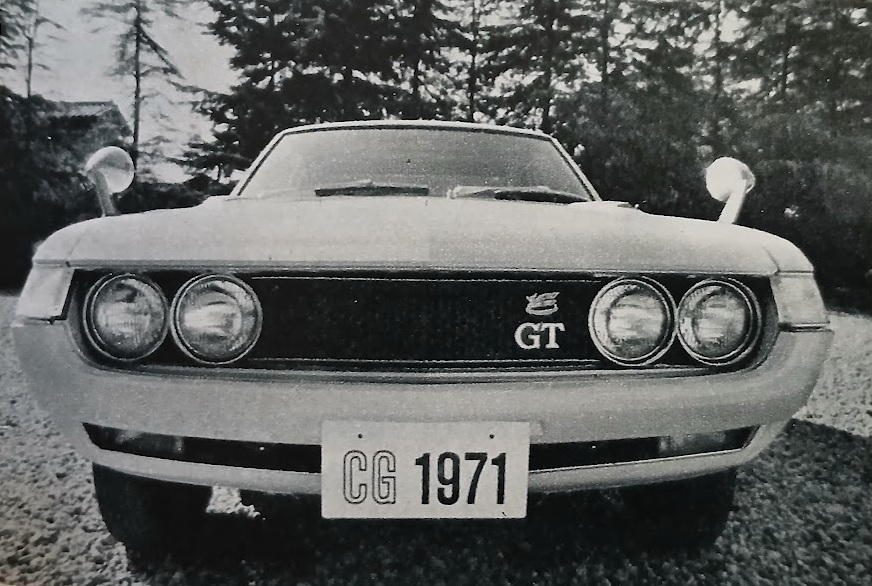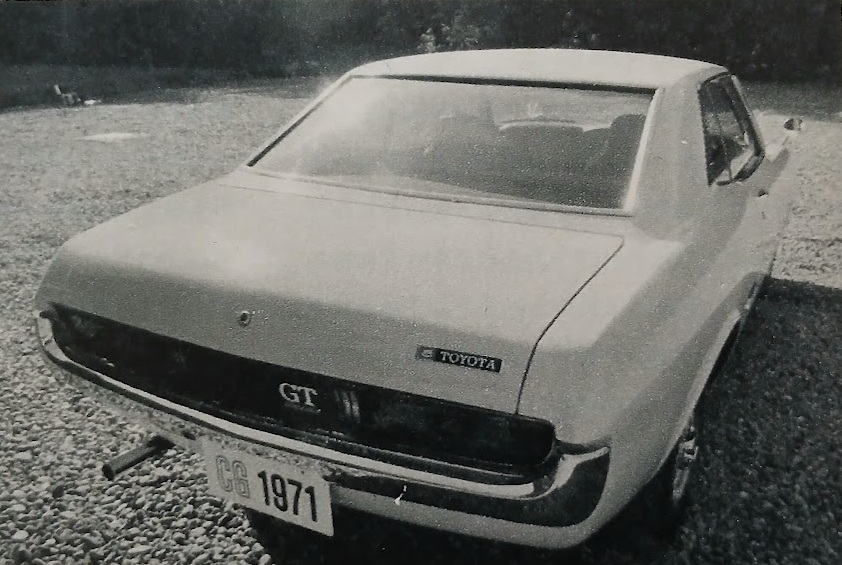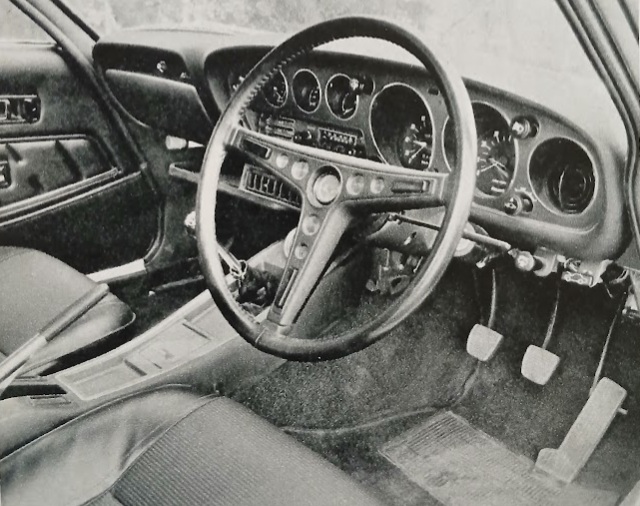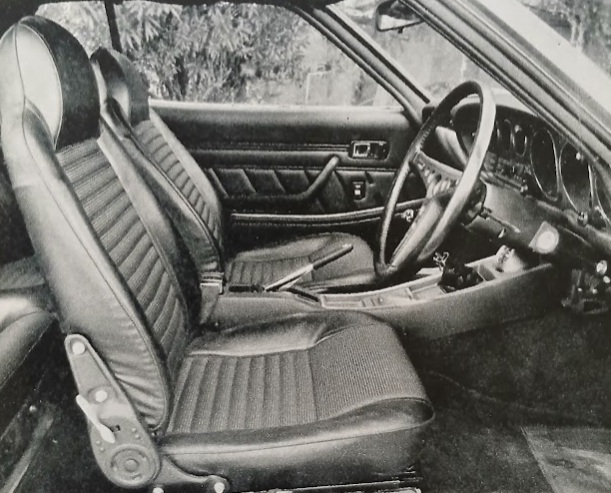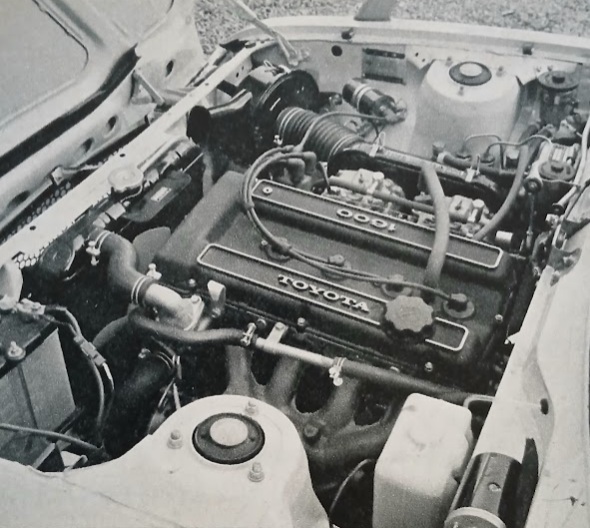Toyota Celica 1600GT (1971)
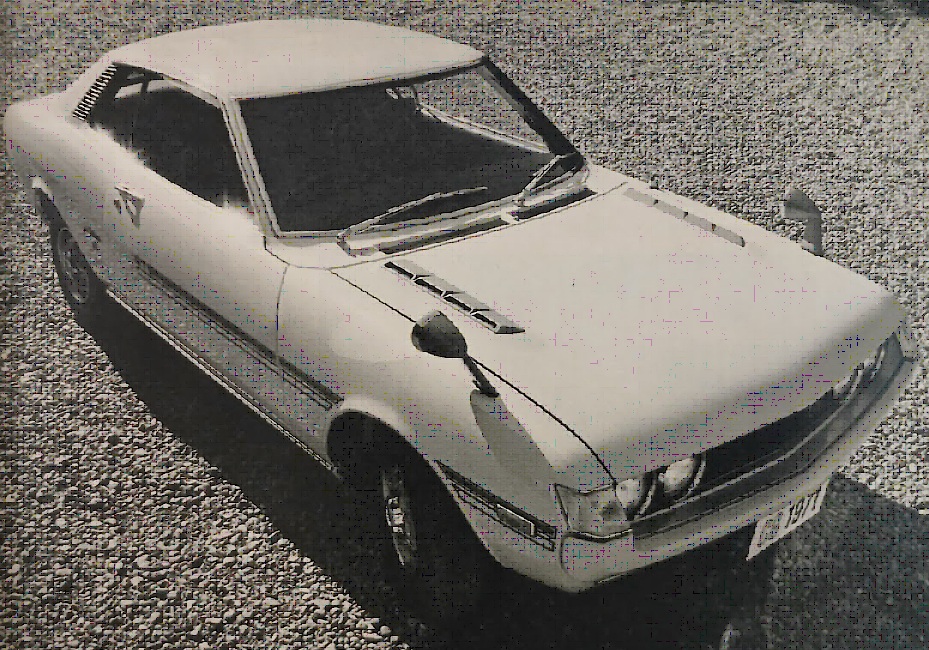
Publication: Car Graphic
Format: Road Impressions
Date: January 1971
Author: “C/G Test Group” (uncredited)
Road testing the Toyota Celica 1600GT
The day after testing Toyota’s new Carina 1600ST, I had the opportunity to drive the Celica GT for just three hours, so I’ll share my impressions while keeping them brief. The Celica is a sporty two-door hardtop that shares its floorpan, suspension, and powertrain with the Carina. The aim is to enable users to create a semi-customized vehicle—starting with a long-nose, short-deck bodyshell, a Japanese version of the so-called “specialty car” that became a hit in the US with the Mustang and in Europe with the Capri—with a choice of four exterior options, four engines, and nine interior options, all of which are computer-calculated and delivered within a short lead time, according to a Toyota PR spokesperson. In addition to the three engines shared with the Carina, the Celica also offers a GT model with a unique DOHC 1588cc 115ps engine and 5-speed gearbox.
The model tested this time was a GT (875,000 yen) with a yellow body and vinyl roof (which completely spoils the car’s beautiful lines). The GT’s engine is based on the Carina/Celica 1588cc OHV unit, tuned with a chain-driven DOHC head (compression ratio, 9.8) and two Solex 40 PHH carburetors, producing 115ps at 6400rpm and 14.5kgm of torque at 5200rpm. The drivetrain is identical to that of the Carina 1600ST we tested the previous day, with a 5-speed gearbox and 4.11 final drive. The tires were high-speed 165HR-13 radials (the test car had Bridgestone Radial 20s) mounted on 4.5J rims.
The driving position is just like the Alfa GTV’s, and although you sit lower than in the Carina, forward visibility is just as good. The seats, which are integrated with the headrests, are made with rubber springs and urethane foam padding, and are thin but well-shaped and comfortable to sit in. Only the GT is upholstered in breathable vinyl fabric. The seats are positioned far back enough that, even being 178cm tall (5’10”), I could comfortably stretch my arms and legs out to the wheel and pedals. The car is low at 1310mm, but the rear seat cushions are set lower to ensure adequate headroom, and the backrests are curved, allowing two adults to ride for long periods of time. However, if the driver is tall, the rear passenger’s knees will likely hit the backrest.
With no time to check the layout or operation of the controls, we headed for the Tomei Expressway in an unfortunately-timed downpour. At low speeds in the city, the DOHC 115ps engine’s true potential was completely obscured, but it held up just as well at low speeds as the Carina 1600ST’s 105ps OHV. However, one difference I noted in the city compared to the Carina 1600ST’s engine was a brief crackling sound and detonation when stepping on the gas from around idling speed. I made frequent use of third gear, which offers powerful acceleration even below 40km/h, as we drove along National Route 246 toward the Tomei Expressway.
The suspension did not feel much different than the Carina, but the Celica’s front seat is positioned exactly in the center of the car fore-and-aft, resulting in a smooth ride with almost no pitching. The test car was fitted with Bridgestone’s new Radial 20 tires, which are slightly softer than the Radial 10s and less sensitive to road irregularities. On the other hand, the steering response was slightly sluggish compared to the Carina I drove the day before. The steering wheel was wrapped in real leather, which was softer and more comfortable in the hands than the vinyl leather rim in the Carina.
I headed out onto the Tomei Expressway and, in second and third gear, pushed the engine up to 7000rpm (the beginning of the redline), with the speedometer showing speeds of about 96 and 140km/h, respectively. Up to about 6000rpm, the engine seemed no different than the Carina’s OHV unit, but even after passing 7500rpm, it felt like it could continue to climb, as you would expect from a DOHC unit. This engine is also outstanding among Toyotas for its low mechanical noise, very little vibration even at 7000rpm, and a bolder exhaust note than the Carina, which resonates inside the body a little above 4000rpm, but does not get louder even as the rotation is increased beyond that. As I only drove it for a short time on public roads in heavy rain, I wasn’t able to fully test the DOHC’s capabilities, but power output in the high-speed rotation range from 4000-8000rpm is certainly more powerful than the Carina’s 105ps OHV.
100km/h on the speedometer (which is fairly optimistic, with the actual speed measured at about 95km/h) corresponds to about 3600rpm in fourth gear and about 3100rpm in fifth gear. In either case, it’s extremely quiet, and there’s not much difference in the noise level (which includes a little mechanical noise, but is mostly exhaust noise). The 5-speed gearbox, with the same ratios as the Carina, is also similar to the Alfa, allowing you to use the top three gears according to your needs and mood, even at the relatively low speed of 100km/h. In other words, the top three gears are quite close together, and the engine has good torque characteristics, so there’s a wide overlap between their usable ranges. For example, accelerating from 80km/h is easy in fifth gear if you’re not in a hurry, but if you downshift to third gear, the response is instantaneous.
The rain got heavier and the rear window started to fog up, so I switched on the defogger. After about three minutes, the fog cleared in horizontal stripes about 3cm wide along the heating wire, and after another five minutes it was completely clear. Among the many Japanese cars that have “defoggers” in name only, the Celica’s was particularly effective. It was cold that day, so I was also able to test out the heater/demister system, which makes it possible to create the ideal condition, in which the heater warms your feet and fresh air cools your face. The wipers cannot keep up with the high performance of this car, however. The blades float up off the windshield at around 120km/h. A high-speed type with fins would be preferable. What particularly bothered me at the toll gates on the highway was that the power windows were extremely slow to open and close, and the position of the switch (on the side of the driver’s door) makes it difficult to operate unless you’re used to it. Personally, I would prefer to quickly open and close them manually, and the Celica is not such a big car that the passenger’s side is difficult to reach.
Although I was not able to test the handling thoroughly, even in my limited experience, I found that the Bridgestone Radial 20 165HR-13 tires had good grip on wet roads, and even when I applied power in a tight corner in second gear, the rear wheels did not slide. Despite having a rigid axle, the Celica behaves exceptionally well for a Japanese car under such adverse conditions (as does the Carina). One of the reasons for this excellent handling, which is comparable to that of a top European sports sedan, is that it has ample tire and rim width (4.5J rims and 165HR-13 tires are common for a car of this size and weight in Europe, but the standard practice for Japanese cars is 4J and 155SR-13 tires at most). There are many positive aspects to the Celica’s design, but I particularly commend their judgment in choosing to equip the car with high-speed radial tires one size larger than usual. I hope to take the Toyota Celica GT for a test drive again soon.
Postscript: Story Photos
